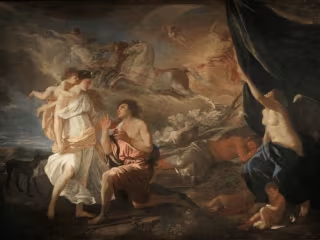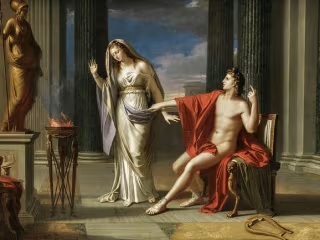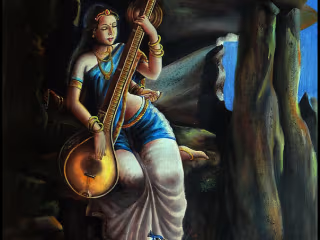Ame-no-uzume: Goddess Of Dawn
0
Ghostwriter
Blog Writer
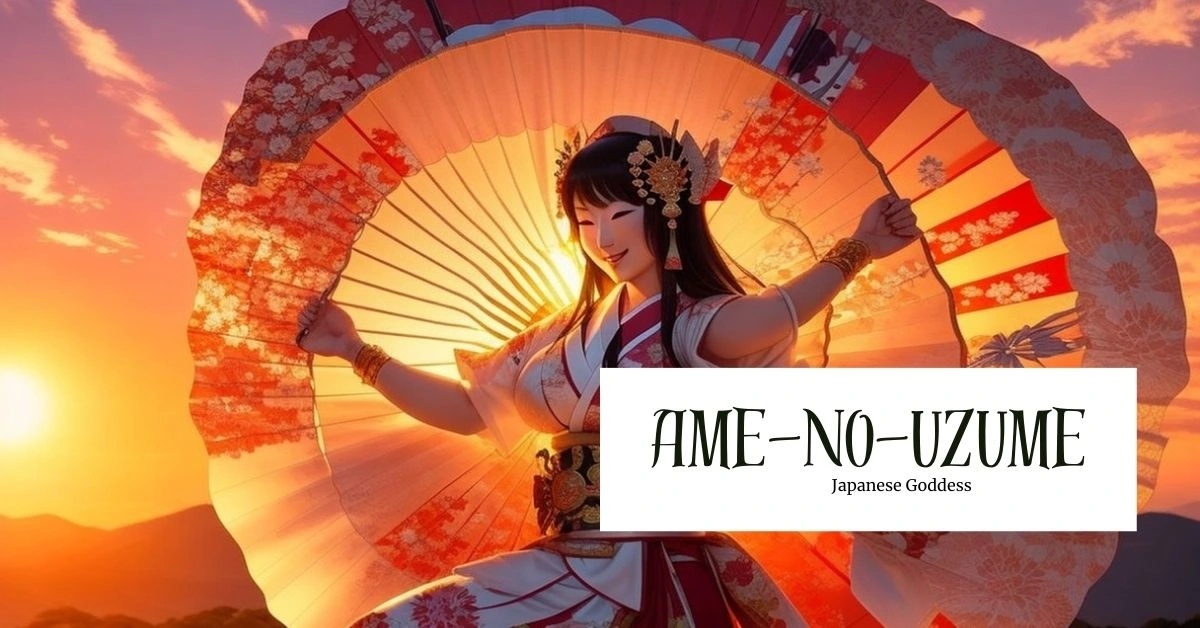
Ame-no-Uzume is a fascinating character in Japanese mythology, revered as the Shinto deity of dawn, revelry, meditation, and the arts. Her vibrant spirit and playful personality bring to life the ancient tales that surround her, from her role in saving the sun and summoning the goddess Amaterasu to her famous legend of the floating bridge of heaven. Known as the goddess of dawn and revelry, Ame-no-Uzume evokes joy and laughter, even in the most solemn moments. Through her spirited dances and quick wit, she becomes a catalyst for transformation and renewal, captivating gods and humans alike.
Overview of Ame-no-Uzume
Ame-no-Uzume-no-Mikoto, also known as Ame-no-Uzume or Uzume (“Ame-No-Uzume”), is a highly revered goddess in ancient Shinto traditions. According to the Kojiki and the Nihon Shoki, she is the daughter of the prominent deities Izanagi and Izanami, who played a crucial role in the world’s creation. Ame-no-Uzume’s divine lineage makes her a significant figure in the Shinto pantheon, and her association with light adds to her significance. Her exact origins and the extent of her powers are the subject of much debate among scholars. Nevertheless, she remains a prominent and influential figure in ancient Shinto mythology.
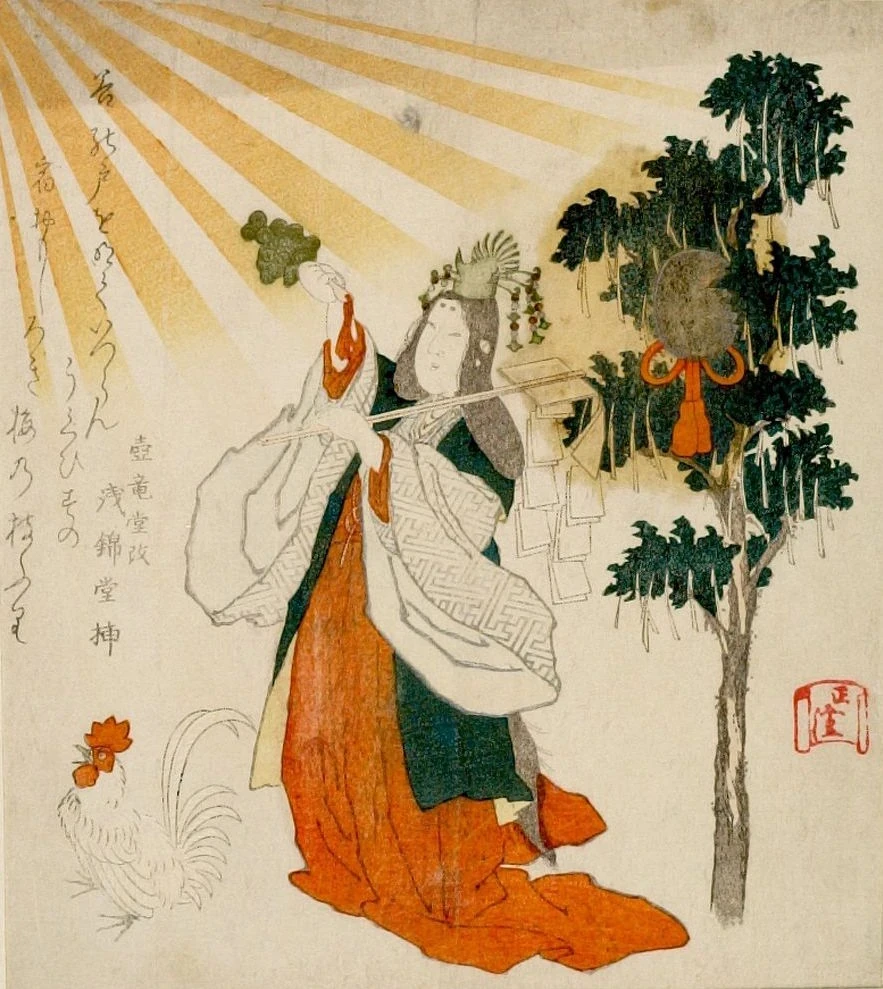
Source: Mythusfandom
Titles
The Goddess of Dawn
The Great Persuader
The Heavenly Alarming Female
Abilities
Ame-no-Uzume is a highly regarded figure in Japanese culture due to her diverse and extensive contributions to various artistic expressions. Her influence spans traditional art forms such as kagura, a dance form that she created that portrays the stories of divine kami, and the ancient theatrical tradition of noh. Her association with these art forms stems from her marital ties and deep connections to her husband, establishing her as the revered goddess of revelry (Nair).
Additionally, Ame-no-Uzume’s impact extends to comedy and theater, notably the kyogen genre. Her association with various theatrical forms is why she is the goddess of revelry (Nair).
Characteristics
Artistic depictions of Ame-no-Uzume often portray her with various characteristics and symbols associated with her roles and attributes. Despite scholars saying little about her specific physical appearance, myths record that she certainly isn’t ashamed of her body and is often depicted as a youthful and radiant goddess, exuding vibrant energy (“Ame No Uzume: How She Became the First Performing Comic”). In visual representations, Ame-no-Uzume usually wears flowing, dynamic robes that symbolize movement and dance. Her attire may include colorful and ornate garments, reflecting her association with festivities and celebrations. The details in her clothing also emphasize her cheerful and vibrant nature. Her customary smile further emphasizes her joyful personality.
Furthermore, as a goddess of dawn and light, sometimes Ame-no-Uzume is depicted with a radiant halo or a nimbus of light surrounding her, representing her connection to the sun and her role in bringing illumination and hope.
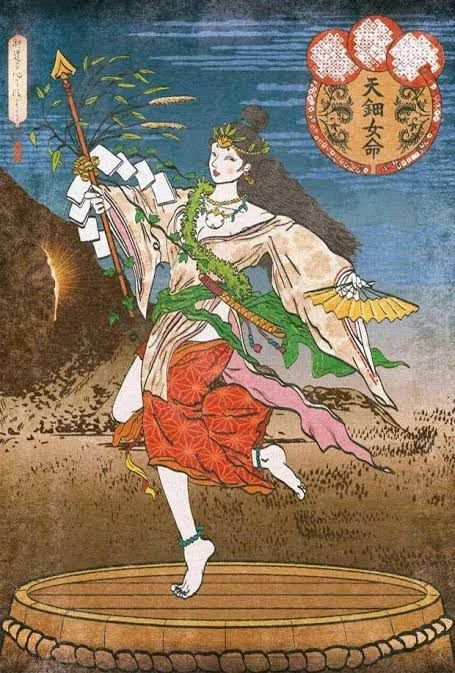
Source: Wattpad
Traits
In Japanese mythology, Ame-no-Uzume is the goddess of dawn and dutifully serves her mistress, Amaterasu, who is the goddess of the sun. However, Ame-no-Uzume’s character is markedly different from her master’s, as she is more inclined towards joyfulness and creativity (“Ame-No-Uzume”).The goddess of revelry embodies a playful and mischievous nature, which makes her one of the most prominent figures in Japanese mythology. Her role is to bring joy, laughter, and a sense of lightheartedness to both the divine and human realms. Ame-no-Uzume emphasizes the importance of finding delight and merriment in life, which is crucial to lead a happy and fulfilling existence.
Symbols
As the goddess of dawn, one of Ame-no-Uzume’s prominent symbols is the sun. In many illustrations of her, the sun is incorporated into the imagery, whether in the background or as part of her head garments. In addition to the sun, one of her most prominent symbols is dancing and music, as these are the activities for which she is most well-known. Ame-no-Uzume has a kagura fan in her hand in many art pieces (a traditional Shinto instrument used in ritual dances). This fan represents her connection to the performing arts and her role as a dancer. The Kagura fan is also a symbol of joy and celebration, and the instrument is known to captivate and entertain others.
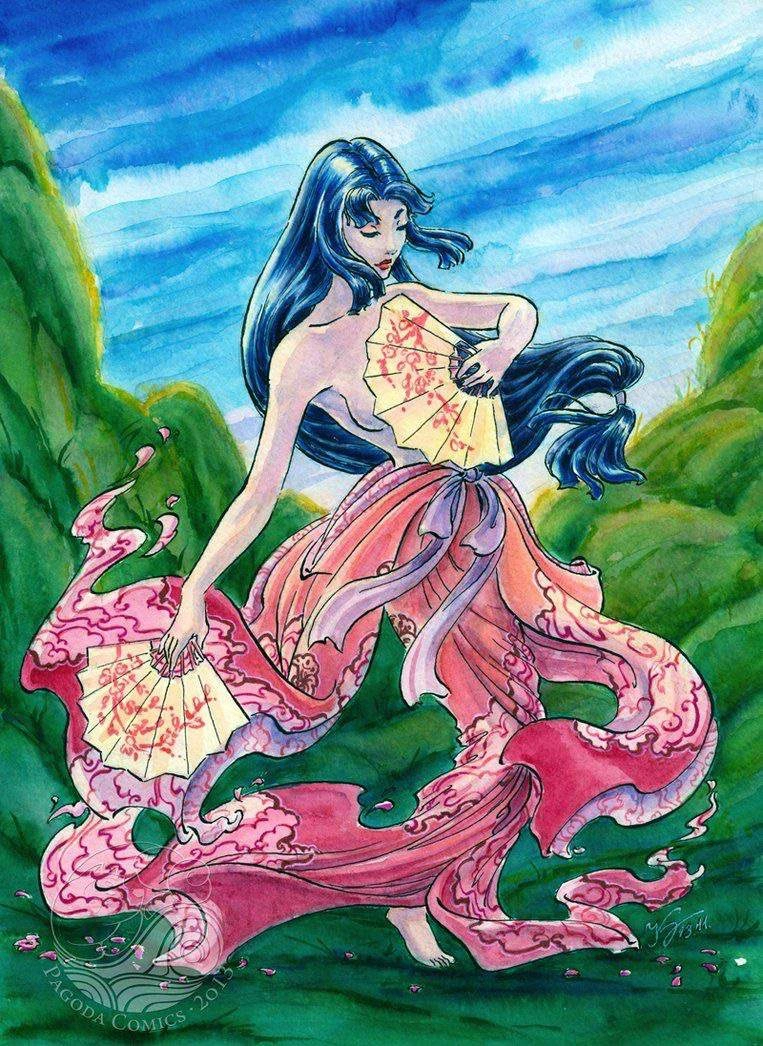
Source: Aminoapps
Festivals and Rituals
Throughout the years, the Shinto religion has experienced a decline in its prominence, but many still worship Ame No Uzume even today. Various shrines pay homage to her, including the Chiyo Shrine, Tsubaki America Shrine, and Tsubaki Grand Shrine. Furthermore, the captivating and graceful art forms of classical music and dance present in Shinto religious ceremonies, known as kagura, are believed to have originated from Ame No Uzume’s influence. Her legacy continues to live on through the practices and traditions of the Shinto belief system (Nair).
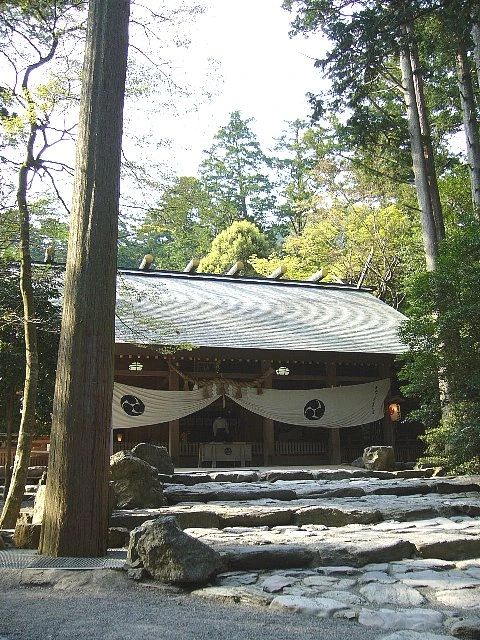
Source: Wikipedia
Legends associated with Ame-no-Uzume
Ame-no-Uzume’s roots trace back to ancient Japanese folklore. The goddess of dawn is known for her impressive accomplishments, including rescuing the sun and summoning the revered goddess Amaterasu. Her journey across the floating bridge of heaven is also a well-known legend.
Origin story
The goddess of dawn was one of the thousands of kami, or spirits, who inhabited both Heaven and Earth (Greenberg and PhD). Many believe that Ame-no-Uzume was born from the union of Izanami and Izanagi, the gods of creation and life and death, respectively. According to legend, when the world was born, Izanami and Izanagi were tasked with creating the islands of Japan and populating them with gods. During this process, Izanami gave birth to numerous deities, including Ame-no-Uzume. As a goddess associated with joy, revelry, and the performing arts, Ame-no-Uzume was known for bringing happiness and entertainment to the divine realm. Her presence was particularly effective in dispelling negativity and invoking positive energy.
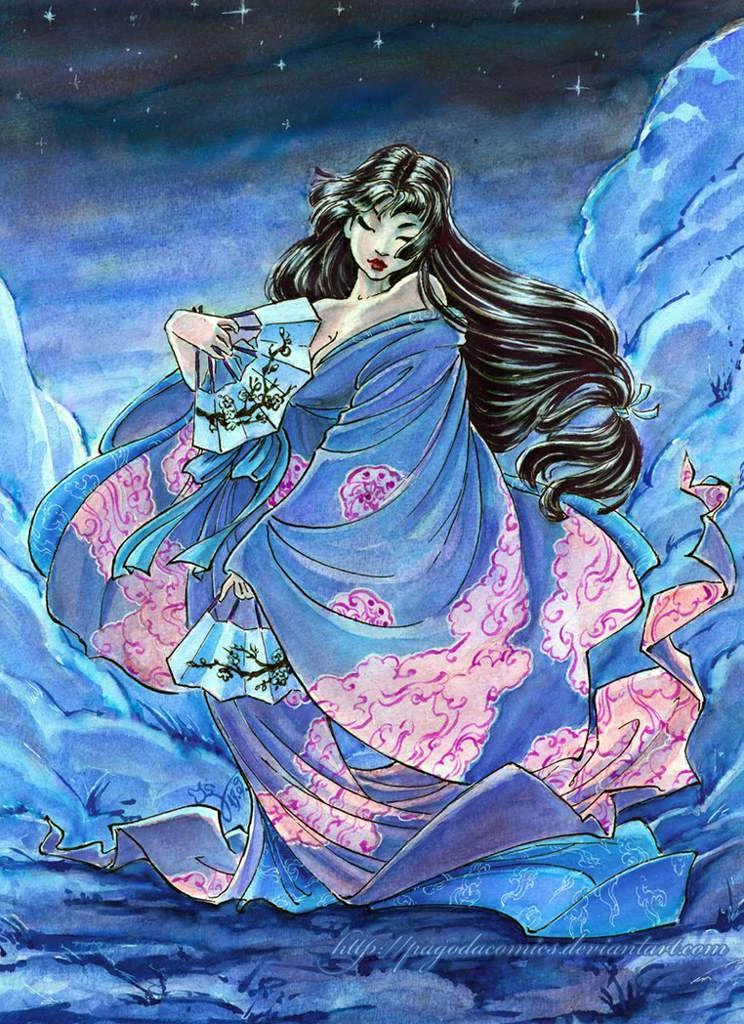
Source: Aminoapps
Awakening the Sun: Saving the Goddess Amaterasu
It all began when a conflict arose between Amaterasu, the celestial sun goddess, and her brother Susanoo, the deity associated with the sea and storms. Losing her temper, Susanoo vandalized Amaterasu’s rice fields and caused harm to her maidens. Filled with fear and shame, Amaterasu sought refuge within the Heavenly Cave known as Amano-Iwato, refusing to emerge. As she retreated into the rocky sanctuary, the world was plunged into darkness and coldness, putting all of existence at risk. Though the other Kami tried to persuade the sun goddess to come out, she wouldn’t (“Ame No Uzume: How She Became the First Performing Comic”).
Finally, a young maiden named Ame-no-Uzume had an idea and performed a lively and comical dance, gradually shedding her garments until she stood partially nude. Her energetic dancing and unexpected nudity elicited laughter from the divine beings. Deep within the confines of the hidden cave, Amaterasu caught wind of the joyous laughter and grew curious. Intrigued by the merriment, she pushed aside the rock blocking the cave’s entrance and witnessed Ame-no-Uzume’s captivating dance. Amused by the spectacle, Amaterasu stepped out of the cave to see better (“Ame-No-Uzume”).
Unbeknownst to Amaterasu, the other gods swiftly took action. They swiftly rolled the rock back into place, sealing the cave’s mouth, and secured it with sacred shimenawa rope. Amaterasu, now outside the cave, was captivated by her reflection in a mirror put into place by Ame-no-Uzume. Distracted by her image, Amaterasu couldn’t reenter the cave, and as a result, the radiant sun returned to illuminate the world. Ame-no-Uzume, with her ingenious and spirited performance, emerged as the unexpected savior who brought light and warmth back to the world (“Ame-No-Uzume”).
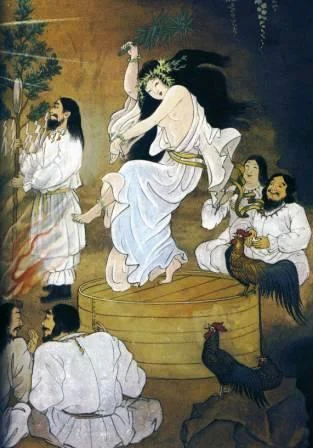
Source: Journeyingtothegoddess
Meeting her Husband: Crossing the Heavenly Floating Bridge
Ame-no-Uzume was a trusted friend and advisor to Amaterasu. When Amaterasu summoned Ninigi, the Grandchild of Heaven, to establish order and civilization among the earthly kami and found the imperial line of Japan, Uzume accompanied him for added protection. Together, they embarked on their journey toward Japan, but a fearsome dragon at the ethereal Floating Bridge of Heaven stopped them. Despite Ninigi’s bravery, Uzume stepped forward to subdue the dragon with her enchanting presence. After a seductive conversation, the dragon revealed himself to be Sarutahiko, the deity of Crossroads and guided them on their journey. Uzume and Sarutahiko later married, and their lineage gave rise to a group of sacred female dancers who performed in Shinto ceremonies throughout Japan (“Ame No Uzume: How She Became the First Performing Comic”).
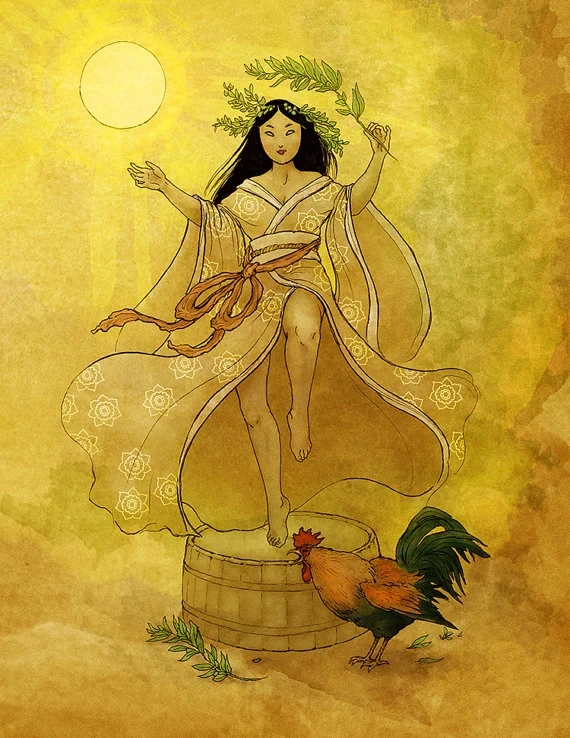
Source: Aliencreatures
Influences of other religions/cultures on Ame-no-Uzume
We can’t say with certainty which religions have influenced the Goddess of Dawn, but we can make informed assumptions based on association. For example, Buddhism, which shares syncretism with Shintoism in Japan, may have contributed symbols or concepts to our understanding of Ame-no-Uzume. Additionally, Taoism’s emphasis on balance and harmony could have influenced the portrayal of Ame-no-Uzume as a deity associated with joy and laughter. Furthermore, cultural exchanges with Korea may have brought influences from Korean Shamanism into the character of Ame-no-Uzume.
It is also critical to consider how local folklore, oral traditions, and mythologies from neighboring regions could have shaped the stories and attributes associated with Ame-no-Uzume. By doing so, we can better understand the Goddess of Dawn and her role in the broader religious and cultural landscape.
Modern appearances
Japanese popular culture finds a wealth of inspiration in mythology. In the video game Megami Tensei, particularly in the Persona series, Ame-no-Uzume is a demon that can be summoned (“Ame-No-Uzume”).

Source: Megamitensei
Final thoughts
Ame-no-Uzume’s outlook on life reveals a profound understanding of the power of laughter, resilience, and the ability to find light amidst darkness. As a beloved figure in Japanese folklore, her presence inspires celebration and imagination today. Her legends are a testament to the enduring appeal of a deity who embodies the joy of life and the power of laughter, even in the face of adversity.
References
“Ame No Uzume: How She Became the First Performing Comic.” Timeless Myths, www.timelessmyths.com/gods/japanese/ame-no-uzume/#%E2%80%93_Ame-no-Uzume_and_Sarutahiko_The_Meeting_on_the_Bridge. Accessed 2 July 2023.
“Ame-No-Uzume.” Mythopedia, mythopedia.com/topics/ame-no-uzume#pop-culture. Accessed 2 July 2023.
Greenberg, Mike, and PhD. “Ame-No-Uzume Goddess of the Dawn: The Modern Guide.” Mythology Source, 29 Dec. 2020, mythologysource.com/ame-no-uzume-japanese-goddess/.
Nair, Nitten. “Ame-No-Uzume : The Goddess of Dawn.” Mythlok, 13 Oct. 2022, mythlok.com/ame-no-uzume/.
Did we miss something? Do you know another aspect of this legend? Don't hesitate to reach out!
Like this project
0
A client hired me to write several informative pieces on Japanese Goddesses, and this blog post centers around the Goddess of Dawn, Ame-no-uzume.
Likes
0
Views
574
Tags
Ghostwriter
Blog Writer


